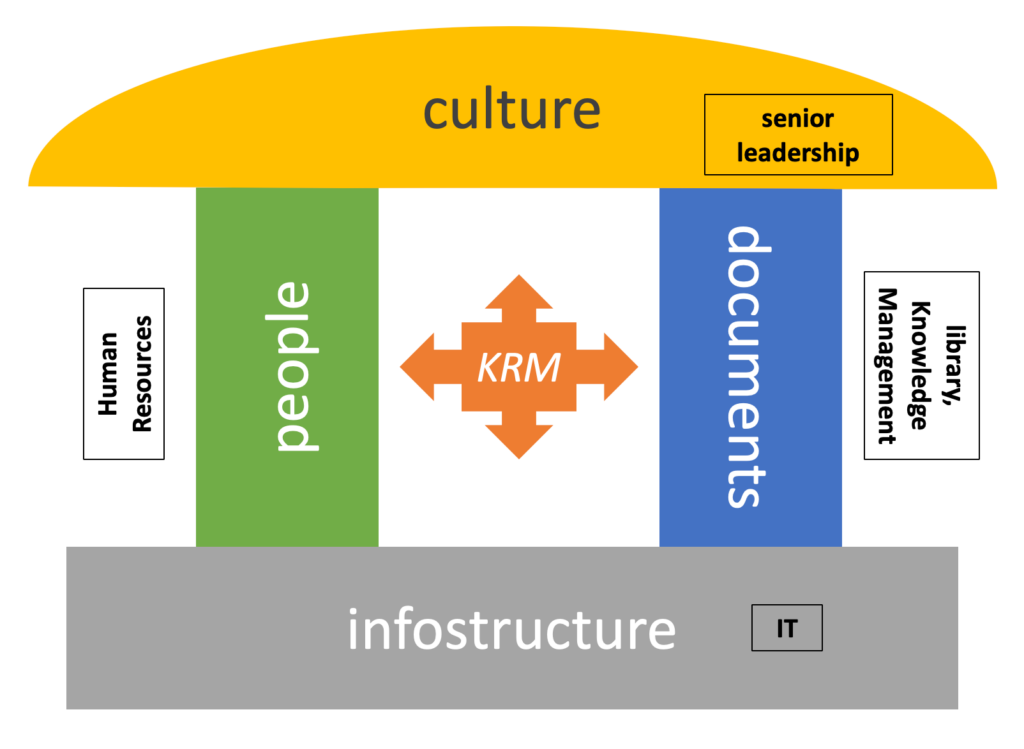
Knowledge Strategy, Organization and Management
Enterprise Knowledge: What is it?
I refer often to “enterprise knowledge” — but what do I mean? (And no, not discussions about which are the best Star Trek episodes.} Last month at KMWorld23, the range of content-rich presentations I heard and absorbing conversations I had reminded me of the Hindu tale of the six blind men and the elephant. Each accurately describes his unique part of the whole. When the emperor then bellows, So which of you is correct? — the answer is, essentially, NONE of us, individually, is — and ALL of us, together, are. Diversified answers from a group that embodies multiple competencies and perspectives are typically superior to single-source answers.
As with any good consultant, my goal is to approach each client industry as an objective outsider. This enables me to be in independent proxy for the “voice of the customer” — or, depending on your point of view, an annoying pest who asks a lot of questions that insiders would deem obvious.
Scoping the elephant
As I work with the discipline of Knowledge Management (KM) — as, variably, its advocate and its critic — I’ve often had the nagging thought that each of us is looking at a different part of that elephant. If I asked a content manager, she might say that (1) KM’s core purpose is building and maintaining a platform upon which we can curate and make available internal documents. An HR person would be more likely to respond that (2) KM means organizational learning — ensuring that we have the skills and competencies we need to compete successfully. If I ask an IT person, the response is something on the order of (3) KM makes available the tools and technologies for other people to do their work effiently and effectively. A strategist might say (4) KM consists of building and maintaining networks and processes to achieve competitive advantage.
However different their points of view, each would be correct — within his/her respective frame of reference. Paradoxically, this is both the frustration of trying to explain organizational knowledge, and the opportunity in so doing. When I speak with executive leadership about KM, I essentially give the ‘whole elephant’ description: It’s all of these, working in concert. Knowledge is (ideally) a team sport. But the day-to-day reality is that each of these functions typically has a distinct reporting structure, a different mix of skills and resources, and different incentives — too often with little coordination among them.
Personalization versus codification
Various alternative macro-taxonomies have been proposed for knowledge, in various contexts. Arguably one of the most compelling and elegant is the view articulated by Morton Hansen and others that posits essentially two diverging approaches between which organizations choose in developing a coherent strategy for knowledge: personalization and codification. Put simply, the former puts people at the center of the knowledge universe, while the latter is document-centric. One might naturally gravitate toward a hybrid approach, my typical recommendation. But having now gained more experience in this, I find this dichotomy under-represents two other essential supporting pieces of the knowledge puzzle.
The four domains of knowledge
What does an integrated view of knowledge consist of? Four elements — which we’ll call domains, acknowledging that each is typically highly developed as its own separate functional entity. The four are (1) personal human knowledge (Domain P), (2) documents (Domain D), (3) infostructure (computing and communications technologies — Domain I); and (4) culture, a catch-all category for everything else that matters (Domain C). Like the elephant, each of the four domains is an essential piece of the knowledge puzzle — and the whole must be managed as a coordinated team.
- People – interests, aptitudes, and skills; job-related training and experience; other training and experience; hobbies and avocations
- Documents – print documents; electronic documents (text, numbers, audio, video); databases
- Infostructure – technology-based infrastructure to access and manage documents (SharePoint); tech to connect and communicate with other people (email, Slack, electronic meetings, etc.)
- Culture – networks and communities; practices and processes; etc. (More here: https://timwoodpowell.com/managing-the-unmeasurable/)
Note that these roughly correspond to the four levels within the ‘epistemic pyramid‘: data (= infostructure). information (=documents), knowledge (=people). and intelligence (= culture.). Each domain is essential to a thriving knowledge enterprise — there is no hierarchy implied or intended.
Disparate domain management
In most large organizations, the four knowledge domains show little in the way of formal functional overlap. People are ‘managed’ — hired, trained, incentivized, rewarded, promoted, disciplined — out of Human Resources. Enterprise documents are managed out of the library or knowledge management (or equivalent). Infostructure is managed out of IT. And culture is managed out of the senior executive team.
The obvious problem is that, in practice, most real-world knowledge challenges involve more than one of the domains — and often all four are engaged to some extent. We had a client once where the ‘presenting problem’ was a series of lapses in updating a central database of use to other workers. After some inquiry, we learned that there were morale problems causing work outages and the need for greater-then-usual overtime payments — that in turn caused lapses in updating this core shared resource.
To map along our Four Domains model, the people (Domain P) were lagging in updating the documents (Domain D, supported by I). Once we were able to identify and assess these forces in play, a solution was articulated and championed by the senior team (Domain C) — that included elements in each of the three other domains, as well as a reminder of the overarching purpose and value of the activity. Knowledge Resources Management (KRM) is the name we’ve given this cross-disciplinary inclusive approach.
While we can speak of Knowledge as an enterprise resource in a theoretical sense, in practice it involves coordinated management across these different — and typically siloed — enterprise domains. While technology-based linkages can assist in bridging these divides, it requires the vision and will of senior leadership to make this happen.

This insightful analogy beautifully highlights the multifaceted nature of Knowledge Management.
The “whole elephant” perspective underscores the need for cohesive integration across domains—human expertise, documents, technology, and culture.
Bridging these silos is key to unlocking true organizational potential. KM isn’t just a toolset; it’s a mindset that thrives on collaboration and diverse perspectives for sustained success.
“Mindset, not toolset.” Well-said, Ovais. It’s a bigger challenge than it seems, due to these organizational domains/silos that must be bridged in order to be optimally effective. Thanks for your insightful comment.